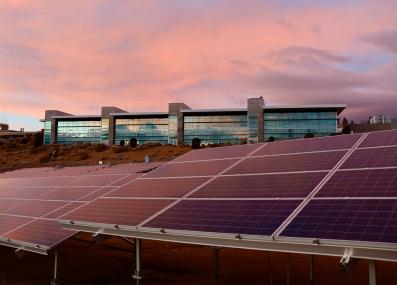Have a question?
When countries pledge to lower their emissions under the Paris Agreement, how do we count which emissions belong to which countries?
Emissions are attributed to the country where they happen geographically—even if the energy produced, or the products manufactured, are destined for somewhere else.
August 5, 2024
Since the 1990s, countries have joined together in the United Nations Framework Convention on Climate Change (UNFCCC), a global agreement to address humanity’s planet-warming greenhouse gas emissions. As part of this agreement, member countries—which now include every member of the United Nations—must count and report their own emissions on a regular basis.
Under the UNFCCC, each nation’s share of global climate change is defined as the total, economy-wide emissions that occur within its borders.
In other words, to calculate its reportable total, a country adds up the emissions from manufacturing, commerce, transportation, agriculture and everything else in its jurisdiction — even if the products or electricity are destined for somewhere else. That means, if a Canadian natural gas plant sells electricity to the U.S., the power plant emissions belong to Canada; if a U.S. company buys timber logged in Brazil, the logging emissions are Brazil’s. The accounting details can be complicated, but the central tenet is not, says Henry Jacoby, an emeritus professor of management at MIT’s Sloan School and the founding co-director of the Institute’s Joint Program on the Science and Policy of Global Change. “In a way, it's simpler than one might imagine. It's just: where did the emissions come from?”
This accounting system has carried over to the 2015 Paris Agreement, the landmark UNFCCC agreement that binds members to lower their emissions and ultimately stop contributing to climate change. Under the Paris Agreement, each country creates a “Nationally Determined Contribution” (NDC), a pledge to reduce its emissions from a baseline level. Once again, those pledges refer only to the emissions within a country’s borders.
The Paris Agreement does, however, allow for some emissions trading between countries, which makes the accounting a bit more complex. Imagine, for example, a nation where reducing emissions is relatively cheap. That nation could reduce its emissions more drastically than is needed to meet its NDC, claim “credits” for the excess reductions, and then sell those credits to a country where emissions reductions are harder and more costly. Companies can participate, too: a US-based company might build a wind project in India, for example, and claim credits to sell to a national government. For these cases, the Paris Agreement has detailed procedures to protect against double counting of emissions reductions.
The emissions from international air travel and international shipping, which literally happen outside anyone’s borders, are an important exception to the Paris accounting rules. These emissions are not attributed to any one country, and no one country is responsible for reducing them. Instead, the International Maritime Organization and the International Civil Aviation Organization, two agencies of the United Nations, track and work to reduce these emissions.
This system may sound obvious, but the UNFCCC accounting is very different from how individual businesses and non-governmental organizations count their emissions. Under the Greenhouse Gas Protocol, a voluntary global standard, these organizations divide their emissions into three different categories or “scopes.” Scope 1 emissions cover all those from a company’s direct operations, like the coal burned to run a furnace or the cars used for company business. Scope 2 covers energy purchases, like the electricity to run the company’s offices. And Scope 3 covers all emissions connected to things the company buys and sells. For Exxon, for example, its Scope 3 emissions include the greenhouse gases from burning the oil it produces.
In a sense, under the UNFCCC accounting guidelines, a nation is considered responsible for only its Scope 1 emissions. Like a company, a country does have some power over emissions from imported electricity, or the goods and services it imports and exports—but it’s not judged responsible for those emissions, and can’t meet its NDC by addressing them.
Thank you to Matteo Ghezzi of Italy for the question.
Submit your own question to Ask MIT Climate
Get the latest from Ask MIT Climate monthly in your inbox








